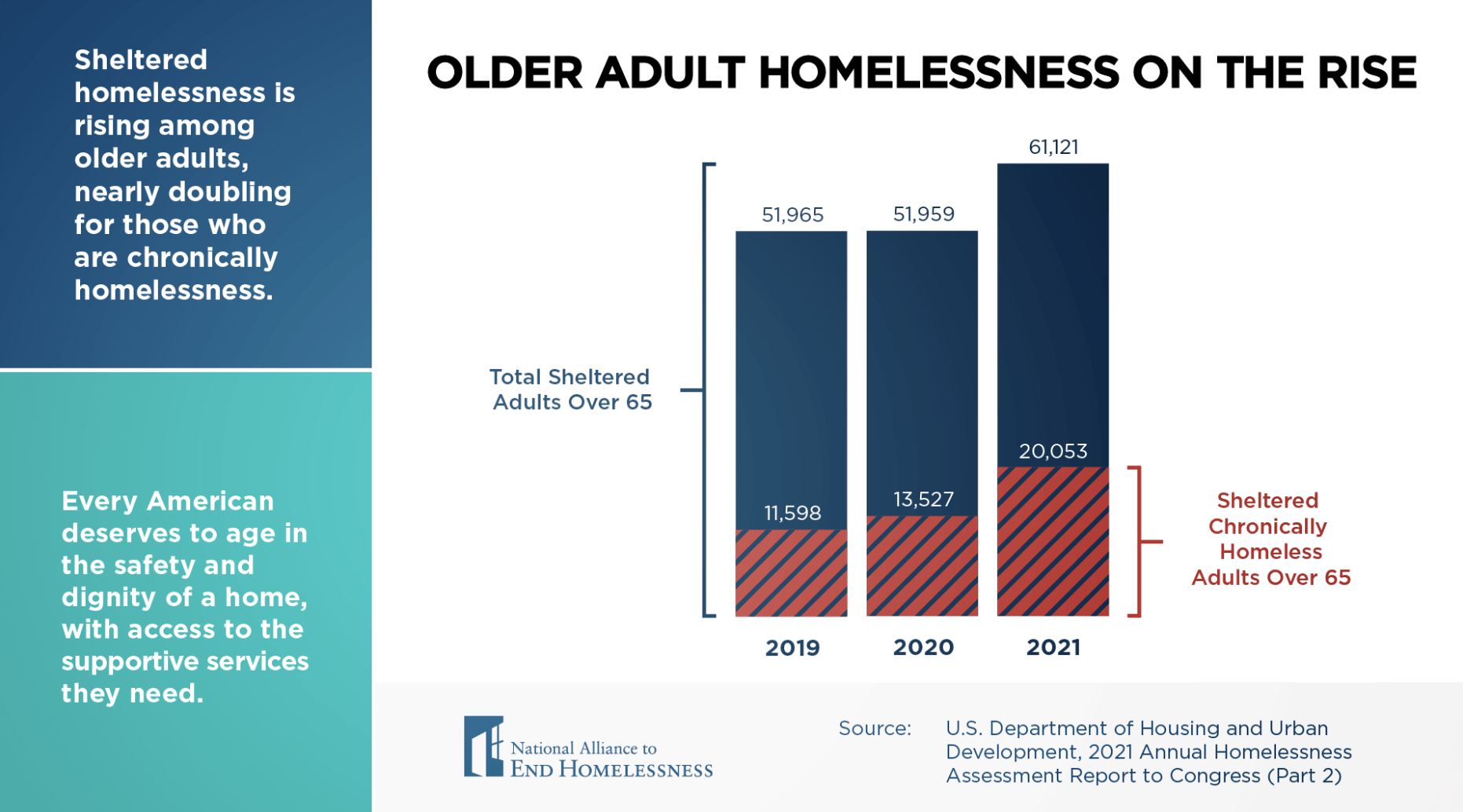In this overview, we have summarized some of the key findings from a larger learning brief examining the context and causes of homelessness among older adults and health needs of this important subpopulation.
Older adults in the United States are at greater risk of experiencing homelessness today than at any point in recent history.
- Almost 10,000 more people aged 65 and older experienced sheltered homelessness in 2021 than in 2019, with older adults both aging into chronic homelessness and experiencing homelessness for the first time later in life (HUD, 2023).
- Projections estimate that the population of adults 65 and older experiencing homelessness in Boston, New York City, and Los Angeles County will grow nearly threefold from 2017 to 2030 (Culhane et al., 2019).
- Nationwide, the annual cost associated with health and shelter use among the aged population experiencing homelessness could amount to $5 billion.
These troubling projections highlight the scale of the impending crisis of older adult homelessness and underscore the urgent need for immediate and sustained action.
As homelessness among older adults reaches alarming levels and the need for affordable housing options integrating supportive services for older adults continues to grow, this is a critical moment to invest in interventions and policies that ensure older adults can age with dignity in living environments that protect their health and promote successful aging.

Continuums of Care (CoCs) and their respective communities face an unprecedented challenge in adjusting their services and programming to meet this shift. Service providers in the homeless response system are tasked with finding creative solutions to new obstacles for their clients, such as adjusting shelter spaces that use bunk beds, installing entry ramps, and understanding how to manage the complex health needs of aging adults.
Programs and policies for this population will require deep cross-sector partnerships and collaborations, particularly with health systems, health departments, and organizations like the Centers for Medicare and Medicaid Services and the Administration for Community Living.
In a cursory scan of the national conversation among CoCs and particularly those within Built for Zero, it’s evident that promising models and innovations do exist. However, many of these programs are new or newly adapted to this focal population and will require ongoing monitoring and rigorous evaluations as they are examined for efforts at scale.
Many of these models and innovations are explored in greater depth in this learning brief, including multiple ideas of how communities and CoCs can begin to diagnose and address this issue locally. At a high level, it’s essential that potential interventions are multifaceted, emphasizing prevention, case management, outreach, and opportunities for permanent supportive housing tailored to address this subpopulation’s unique needs.
If your community has a promising program or partnership that’s successful supported aging adults at risk of or experiencing homelessness, we’d love to learn more and share your story with our network! Email Ben Bradley, Strategy Lead for Public Health, at bbradley@community.solutions.




